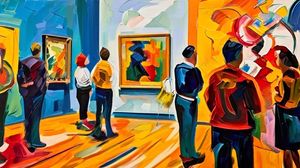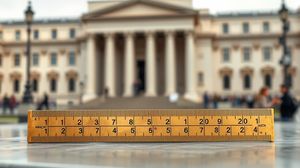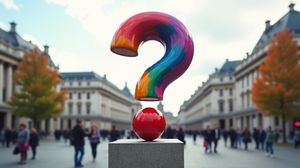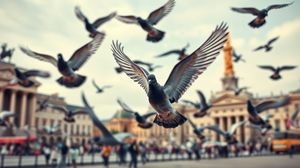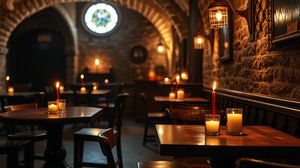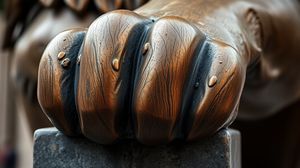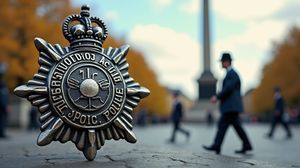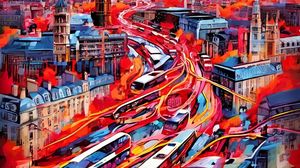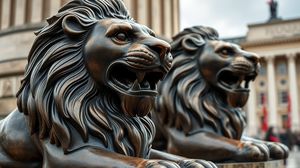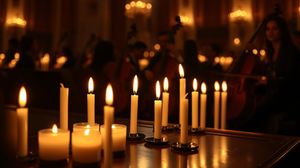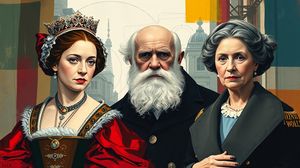
The National Portrait Gallery in London is a fascinating repository of portraits that showcase the history and culture of Britain through the depiction of historically significant and famous British people. It first opened its doors in 1856 and was the first gallery in the world to be dedicated purely to portraiture. The gallery is home to more than 215,000 works spanning across paintings, drawings, sculpture, and photographs.
One of the unique aspects of the National Portrait Gallery is its criteria for the display of portraits; it is the subject of the portrait that is considered important, not the artist who created it. This approach allows visitors to see works from a wide range of artists, capturing the likenesses of people who have been influential in various fields including art, literature, politics, and science.
An interesting fact about the gallery is that its selection of subjects has occasionally sparked debate. For instance, it housed a portrait of Oliver Cromwell who, during his lifetime, was one of the most controversial figures in British history. Such inclusions highlight the gallery's commitment to chronicling history without bias.
The National Portrait Gallery also prides itself on its digital innovation, being among the first in the UK to have its entire collection catalogued online, making it accessible to a global audience. This digital cataloging includes fascinating insights into the characters featured and their place in history.
One peculiar exhibit within the gallery is the 'Chandos Portrait' of William Shakespeare, which is reputedly the only known likeness painted during his lifetime. While its authenticity is still a subject of some debate, it remains an iconic piece that attracts considerable attention from both scholars and the public alike.
Another intriguing aspect is that the gallery blends contemporary portraits with historical pieces. Each year, it hosts the BP Portrait Award, providing a platform for modern artists whose works hang alongside historical portraits, thereby creating an ongoing dialogue between past and present.

Making the Most of Your Visit:
First things first, when you visit the National Portrait Gallery, make sure to head to the top floor first. Many visitors don't realize that the layout is chronological starting from the top, giving you a time-traveling perspective of British history as you work your way down. It's a neat way to explore!
If you love Shakespeare, don't miss the "Chandos Portrait." It's often thought to be the only portrait of Shakespeare painted during his lifetime, though there's some mystery surrounding it. Standing in front of it is quite an experience for theatre buffs!
Plan to spend a little extra time in the Tudor galleries. The portraits here are a massive draw with vivid depictions of some of the most colorful figures in British history. They've recently been revitalized, so you might find something new since your last visit!
Keep an eye out for special exhibits and events, particularly the BP Portrait Award. It's a yearly event that showcases some of the most stunning contemporary portraiture, and it's fascinating to see modern works side by side with historical pieces.
The National Portrait Gallery's digital resources are a real boon. Before you visit, check their online catalog. You can learn all about the characters you'll see, which makes the visit more immersive and fun as you connect stories to the faces.

Visiting Times & Costs:
The National Portrait Gallery is temporarily closed for a major redevelopment project called Inspiring People. It reopened on 22 June 2023. Typically, the gallery is open to the public throughout the year with core opening hours from 10:00 AM to 6:00 PM daily, and extended hours until 9:00 PM on Fridays.
Admission to the National Portrait Gallery is generally free, which allows visitors to explore most of the permanent collection without charge. However, special exhibitions may require a separate ticket, and these usually have varying admission fees depending on the exhibition.
Regarding accessibility, the National Portrait Gallery is committed to ensuring access for all visitors. There is wheelchair access to all public areas of the Gallery, and assistance dogs are welcome. Accessible toilets and lifts are available on each level. Additionally, there are hearing loops installed at various points, and the Gallery also offers additional resources like large print guides to improve the experience for those with visual impairments.
For the latest and most accurate information on opening times and ticketing, it is advisable to check directly with the National Portrait Gallery before planning your visit as times and access might be subject to change.

Address & Map:

Nearby:
